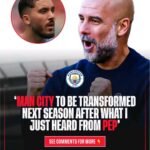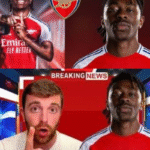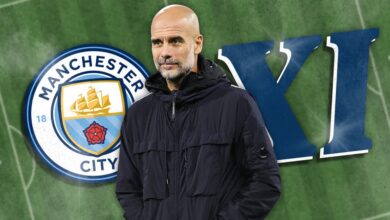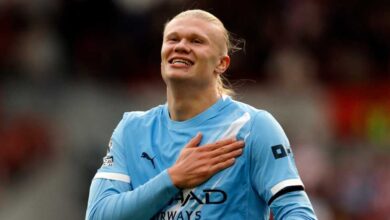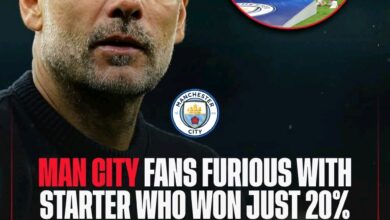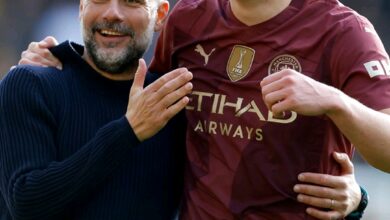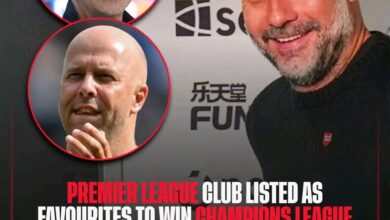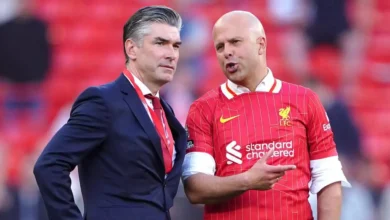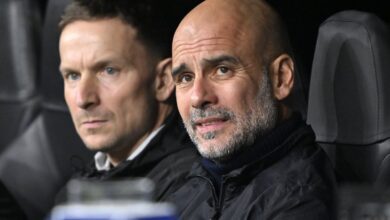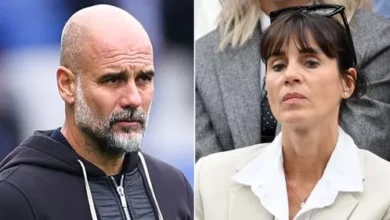Arsenal eye £80m Rodrigo transfer alternative as Andrea Berta gets to work

Arsenal Football Club finds itself at a fascinating crossroads as the summer transfer window approaches. Under the stewardship of Mikel Arteta and the tactical guidance of sporting director Andrea Berta, the Gunners are meticulously crafting a transfer strategy that could define their trajectory for the coming seasons. The club’s recent interest in Brighton’s Kaoru Mitoma represents more than just another potential signing – it symbolizes Arsenal’s pragmatic approach to squad building in an increasingly complex and expensive transfer market.
The North London club has undergone a remarkable transformation since Arteta’s appointment, evolving from a team struggling to secure European football to genuine title contenders. This evolution has been built on shrewd recruitment, youth development, and tactical sophistication. However, the next phase of Arsenal’s project requires careful navigation of financial fair play regulations, wage structures, and the delicate balance between proven quality and emerging talent.
As Arsenal prepares for what could be a defining summer, their transfer activities are being scrutinized not just by their own supporters, but by rivals across Europe who recognize the Gunners’ resurgence as a genuine threat to established hierarchies. The pursuit of players like Mitoma and the reported interest in Real Madrid’s Rodrygo highlights Arsenal’s ambition while also revealing the practical constraints that even elite clubs must navigate in modern football.
To understand Arsenal’s transfer priorities, one must first examine the current squad composition and identify areas requiring reinforcement. The Gunners have built a solid foundation over recent seasons, with key investments in players like Declan Rice, Kai Havertz, and Jurrien Timber paying dividends. However, certain positions remain areas of concern, particularly in attack where consistency and depth have occasionally been lacking.
The striking position has been a long-standing issue for Arsenal. While Kai Havertz has adapted admirably to a false nine role, the club lacks a traditional center-forward who can consistently find the back of the net. Gabriel Jesus, despite his technical ability and work rate, has struggled with injuries and goal-scoring consistency. This situation has led to Arsenal’s reported interest in players like Viktor Gyokeres and Benjamin Sesko, both of whom represent different approaches to solving the striking conundrum. On the wings, Arsenal possesses quality options in Bukayo Saka and Gabriel Martinelli, but depth remains a concern. The injury to Saka during crucial periods has exposed the team’s reliance on their star winger, while Martinelli’s form has been inconsistent. The addition of a versatile winger who can operate on either flank would provide Arteta with greater tactical flexibility and reduce the burden on key players.
The midfield trio of Rice, Martin Ødegaard, and Thomas Partey has functioned well, but Partey’s injury history and age profile suggest succession planning is necessary. Similarly, the defense has been solid but could benefit from additional pace and athleticism, particularly if Arsenal continues to play a high defensive line.
Kaoru Mitoma’s emergence as a transfer target represents Arsenal’s appreciation for players who have proven themselves in the Premier League while maintaining reasonable transfer fees. The Japanese international has been one of Brighton’s standout performers since joining the club in 2021, establishing himself as one of the most exciting wingers in English football.
Mitoma’s journey to Premier League prominence is remarkable. After developing his skills at Kawasaki Frontale in Japan’s J-League, he made a relatively low-key move to Brighton for approximately £2.5 million. This modest investment has proven to be one of the shrewdest pieces of business in recent Premier League history, with Mitoma’s value now estimated to be significantly higher.
The 28-year-old’s playing style perfectly embodies modern wing play. His pace and direct running trouble defenders consistently, while his technical ability allows him to beat opponents in tight spaces. This season’s statistics of 10 goals and three assists in 35 Premier League appearances demonstrate his increasing end product, addressing one of the few criticisms of his earlier performances.
What makes Mitoma particularly attractive to Arsenal is his versatility. Capable of playing on either wing, he could provide cover for both Saka and Martinelli while offering a different tactical profile. His experience of Brighton’s possession-based system under Roberto De Zerbi would translate well to Arteta’s tactical approach, potentially reducing the adaptation period that often accompanies high-profile signings. From a financial perspective, Mitoma represents excellent value in a market where established Premier League wingers command premium fees. Brighton’s track record of developing and eventually selling players suggests they would be open to negotiations for the right price, though they would undoubtedly drive a hard bargain for one of their key assets
Arsenal’s reported interest in Real Madrid’s Rodrygo encapsulates the challenges facing modern football clubs in the transfer market. The Brazilian represents everything Arsenal desire in an attacking player: pace, skill, Champions League experience, and proven quality at the highest level. However, his wage demands reportedly present insurmountable obstacles, forcing the Gunners to explore alternative options.
Rodrygo’s situation at Real Madrid is complex. Despite his undeniable talent and contributions to the club’s recent successes, he faces intense competition for playing time from players like Vinicius Junior, Kylian Mbappé, and other world-class attackers. This competition might make him available for transfer, but his status as a key player for both club and country means any potential suitor must be prepared to meet significant financial demands.
The wage structure implications of signing Rodrygo extend beyond the immediate cost. Arsenal has worked diligently to establish a sustainable wage structure that rewards performance while maintaining financial discipline. Bringing in a player on wages significantly above the current structure could create unrest among existing players and set dangerous precedents for future negotiations.
Chelsea’s reported withdrawal from pursuing Rodrygo due to wage demands serves as a cautionary tale. The Blues have experienced firsthand the consequences of unsustainable wage structures and are now focusing on more financially prudent recruitment strategies. Arsenal’s decision to explore alternatives demonstrates similar financial discipline, even when dealing with dream signings.
This situation highlights the broader challenges facing Premier League clubs in competing with state-owned entities and clubs with different financial models. While Arsenal’s revenue has grown significantly, they must still operate within constraints that don’t apply to all competitors. The appointment of Andrea Berta as Arsenal’s sporting director has added significant expertise to the club’s transfer operations. Berta’s track record at Atletico Madrid, where he helped identify and recruit numerous successful players, brings valuable experience to Arsenal’s recruitment strategy.
Berta’s approach emphasizes detailed scouting, statistical analysis, and understanding of tactical fit over pure star power. This methodology aligns perfectly with Arsenal’s recent transfer philosophy, which has focused on players who can adapt to Arteta’s system while providing long-term value. The Italian’s network of contacts across European football opens doors that might otherwise remain closed, particularly in identifying emerging talent before they become household names.
The addition of Mitoma to Arsenal’s transfer list reportedly reflects Berta’s influence. Rather than fixating solely on the most obvious targets, Berta appears to be identifying players who offer similar qualities at more reasonable prices. This approach maximizes Arsenal’s transfer budget while building squad depth across multiple positions. Berta’s experience in dealing with complex transfers, including player exchanges and structured payment deals, could prove crucial in negotiations. Brighton’s reputation for driving hard bargains requires skilled negotiation, and Berta’s background suggests he’s well-equipped for such challenges.
Arsenal’s interest in Mitoma coincides with reported interest from Bayern Munich, creating potential competition for the player’s signature. The German giants are reportedly seeking replacements for aging wingers Kingsley Coman and Leroy Sané, with Mitoma identified as a potential solution.
Bayern Munich’s interest adds complexity to any potential Arsenal bid. The Bavarian club’s Champions League pedigree and recent success might appeal to a player looking to compete at the highest level. However, Arsenal’s Premier League status and Mitoma’s familiarity with English football could work in the Gunners’ favor.
The competition also impacts the financial aspects of any deal. Multiple interested parties typically drive up both transfer fees and wage demands, potentially testing Arsenal’s financial limits. However, Arsenal’s established relationship with Premier League clubs and understanding of the English transfer market might provide advantages in negotiations.
Bayern’s current transition under new management might also influence their transfer strategy. Uncertainty about tactical systems and playing philosophy could make Arsenal’s established project under Arteta more attractive to potential targets.
Arsenal’s transfer planning must consider Financial Fair Play regulations and their impact on spending capacity. The club’s recent investments in players like Rice and Havertz represent significant commitments that affect future transfer budgets. Balancing these constraints with competitive ambitions requires careful strategic planning.
The reported wage demands for players like Rodrygo highlight how salary costs can limit transfer options. Arsenal’s wage bill has grown significantly with recent signings, reducing flexibility for additional high-earning players. This reality makes players like Mitoma, who would command lower wages than established stars, more attractive options.
Arsenal’s revenue growth through improved commercial deals and Champions League qualification provides additional spending power. However, prudent financial management remains essential to ensure long-term sustainability and compliance with regulations. The club’s approach of targeting players before they reach peak market value, as demonstrated with previous signings, continues to influence current transfer strategy. Mitoma represents this philosophy perfectly – a proven Premier League performer who hasn’t yet reached the astronomical valuations of established stars.
Mikel Arteta’s tactical system places specific demands on wide players that go beyond traditional winger roles. The Spanish manager requires versatility, defensive work rate, and the ability to operate in multiple positions depending on game situations. Mitoma’s playing style suggests strong compatibility with these requirements.
Brighton’s tactical approach under Roberto De Zerbi shares similarities with Arsenal’s possession-based system. Mitoma’s experience in this environment suggests he could adapt quickly to Arteta’s demands, reducing the integration period that often affects new signings. The Japanese international’s pace and direct running would add a different dimension to Arsenal’s attack. While players like Ødegaard and Havertz provide technical excellence, Mitoma’s physicality and directness could trouble different types of defenders, providing tactical variety.
His ability to play on either wing addresses Arsenal’s depth concerns while maintaining tactical consistency. This versatility becomes particularly valuable during congested fixture periods or when key players face suspension or injury. Determining appropriate valuations for players like Mitoma requires analysis of comparable transfers and market conditions. Recent moves involving Premier League wingers provide benchmarks for potential fees, though Brighton’s reputation for maximizing transfer values adds complexity.
The current market shows significant premiums for established Premier League players, particularly those with international experience. Mitoma’s combination of league experience, international recognition, and room for further development places him in a valuable category.
Brighton’s business model revolves around developing players and selling them for significant profits. While this creates opportunities for clubs like Arsenal, it also means negotiating from a position where Brighton holds considerable leverage. The timing of any approach could influence valuations. Summer transfers typically command higher fees than January moves, while the length of remaining contracts affects negotiating positions.
Arsenal’s transfer strategy undoubtedly includes multiple options for each position, ensuring flexibility regardless of individual deal outcomes. While Mitoma represents one attractive option, the club’s recruitment team will have identified several alternatives offering similar qualities.
The broader winger market includes emerging talents from various leagues who might offer better value propositions. Arsenal’s scouting network, enhanced by Berta’s expertise, continues identifying potential targets across different price ranges.
Domestic alternatives within the Premier League provide the advantage of league familiarity but often command premium prices. European options might offer better value but carry adaptation risks. Youth development remains a crucial component of Arsenal’s strategy. The club’s academy continues producing talented players who might reduce the need for external signings in certain positions.
Arsenal’s reported interest in Kaoru Mitoma exemplifies the complex calculations required in modern transfer markets. The Japanese winger represents an intelligent alternative to unattainable dream signings like Rodrygo, demonstrating the club’s pragmatic approach to squad building.
Andrea Berta’s influence on Arsenal’s transfer strategy appears to be bearing fruit, with the identification of players who offer quality, value, and tactical fit. This approach, combined with Arteta’s clear vision for player profiles, positions Arsenal well for continued progress.
The competition from clubs like Bayern Munich highlights Arsenal’s growing stature while also presenting challenges in securing targets. However, the club’s established Premier League presence and clear sporting project provide advantages in attracting players seeking career development.
Financial constraints will continue influencing Arsenal’s transfer decisions, but these limitations also force creative solutions that often prove more sustainable than unlimited spending. The focus on players like Mitoma rather than pursuing financially impossible targets demonstrates mature strategic thinking.
As the summer transfer window approaches, Arsenal’s preparations appear thorough and realistic. The pursuit of attacking reinforcements addresses genuine squad needs while maintaining the club’s philosophical commitment to sustainable growth.
The coming months will reveal whether Arsenal can successfully navigate the complexities of modern transfers while continuing their upward trajectory. The early identification of targets like Mitoma suggests the groundwork is already in place for what could prove to be another successful transfer window.
Whether Mitoma ultimately joins Arsenal remains uncertain, but his inclusion on their transfer list demonstrates the thoughtful approach that has characterized the club’s recent recruitment success. This methodology, balancing ambition with pragmatism, offers the best foundation for continued progress in an increasingly competitive football landscape.


